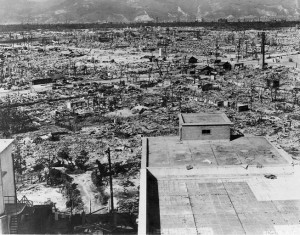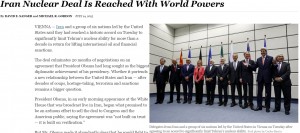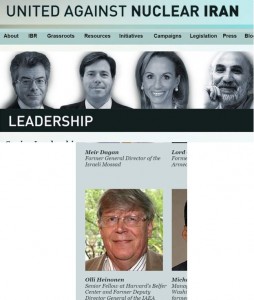Implementation Day Fallout: Neocons Have Nuclear Meltdown Over Prisoner Exchange
The main editorial in today’s New York Times puts into proper prospective the momentous events of this past weekend. The declaration of Implementation Day for the deal negotiated over the past two years between the P5+1 group of nations and Iran merits the title of the editorial: “A Safer World, Thanks to the Iran Deal“. Just consider the import of what has been accomplished through this incredible feat of diplomacy:
This is a moment many thought would never come: Iran has delivered on its commitment under a 2015 agreement with the United States and other major powers to curb or eliminate the most dangerous elements of its nuclear program. The world is now safer for this.
The International Atomic Energy Agency verified on Saturday that Iran has shipped over 8.5 tons of enriched uranium to Russia so Iran can’t use that in bomb-making, disabled more than 12,000 centrifuges and poured concrete into the core of a reactor at Arak designed to produce plutonium.
On Sunday, President Obama hailed these steps as having “cut off every single path Iran could have used to build a bomb” and noted that engagement with Iran has created a “window to try to resolve important issues.” Most important of all, he said, “We’ve achieved this historic progress through diplomacy, without resorting to another war in the Middle East.”
Yet, as long-time commenter lefty665 pointed out this morning, in response to Implementation Day and the exchange of prisoners between the US and Iran, most of the chatter in the press (and especially its dominant conservative voices) dealt with the prisoner exchange:
Can you believe that most of the chatter has been about prisoner exchange and not the actualization of the nuclear deal and dropping of sanctions on Iran? Suppose they just happened in conjunction during a weekend news vacuum? Or was it a conscious, “Here, watch this hand” to distract attention. Either way we sure got a boatload of plain old American bozos baying at the moon as usual.
Perhaps peak “American bozos baying at the moon” over the prisoner exchange came in this editorial from the Wall Street Journal:
Now we know that Washington Post correspondent Jason Rezaian and three other Americans were hostages held by Iran in return for U.S. concessions, in case there was any doubt. And on Saturday we learned the ransom price: $100 billion as part of the completed nuclear deal and a prisoner swap of Iranians who violated U.S. laws. Iran’s Revolutionary Guards Corps should call this Operation Clean Sweep.
The timing of Iran’s Saturday release of the Americans is no accident. This was also implementation day for the nuclear deal, when United Nations sanctions on Tehran were lifted, which means that more than $100 billion in frozen assets will soon flow to Iran and the regime will get a lift from new investment and oil sales. The mullahs were taking no chances and held the hostages until President Obama’s diplomatic checks cleared.
/break/
All of this shows that the nuclear accord is already playing out as critics predicted. The West will tread gingerly in challenging Iran’s nonnuclear military and regional ambitions lest it renege on its nuclear promises. Iran has again shown the world that taking American hostages while Barack Obama is President can yield a diplomatic and military windfall.
Ah, but the Wall Street Journal is far from alone. Consider this fine baying at the moon from Senator Tom Cotton:
But in our elation over their safe return we must be careful not to forget the dangerous circumstances of their release. President Obama has appeased Iran’s terror-sponsoring ayatollahs, this time with a ‘prisoner’ swap to secure the overdue release of four innocent American hostages in return for which Iran gets seven lawfully convicted terrorists and criminals, fourteen terrorism prosecutions halted, $100 billion in sanctions relief, and an industrial-scale nuclear program-and Iran gets to keep Americans Siamak Namazi and Robert Levinson to extract future concessions. While we exult in the return of American hostages, one must also wonder how many more Americans will be taken hostage in the future as a result of President Obama’s shameful decision to negotiate with these terrorists.
Clearly, nothing but all-out war and the deaths of hundreds of thousands will appease Cotton and his blood-lust for Iran.
The anti-Iran echo chamber also fired up against the deal and even moved beyond just the prisoner exchange. Consider this fine bit of echo, which I found when United Against Nuclear Iran retweeted David Albright’s “The Good ISIS” retweeting Josh Rogin promoting an article he wrote (by himself this time, rather than with his usual Partner in Keeping the Neocon Flame Alive Eli Lake) warning us that now Iran is going to arm Assad (somehow I can’t get the full level of retweeting echo to embed…):
Another unintended effect of Iranian prisoner release https://t.co/SCn8OZ9OOp
— ISIS (@TheGoodISIS) January 17, 2016
Remarkably, though, there were a couple of usually reliable voices in the anti-Iran rhetoric who did not come through. AP’s George Jahn seemed fresh out of “diplomatic sources” to smear Iran, as he co-authored a piece of straight up reporting on Implementation Day. Similarly, fear-monger Joby Warrick briefly returned from his Washington Post exile to environmental reporting this morning to write about the deal, but gave as much of his analysis to a likelihood of reformers forging ahead in Iran as hardliners bringing more peril. As with Jahn, David Sanger also wound up only writing straight reporting of Implementation Day without finding much smear material to leak against Iran.
Essentially simultaneous with the lifting of sanctions against Iran due to its nuclear technology, the US imposed new sanctions because of Iran’s recent testing of ballistic missile technology. I confess to not having followed the ballistic missile controversy as closely as the nuclear technology issue, but it did strike me as unfortunate to implement new sanctions right away. This could be an attempt by Obama to provide a bit of comfort to Iran haters in our government. I also haven’t looked deeply, but these sanctions are likely to be much more limited in scope and shouldn’t produce the same widespread damage to Iran’s economy as the nuclear sanctions.
Finally, we also saw a demonstration that Hillary Clinton is indeed now a candidate running for office and no longer the diplomat she was as Secretary of State. Her statement this weekend, published after the announcement of the prisoner exchange but before the prisoners actually left Iran, was overly belligerent in its call for the new ballistic missile sanctions. She almost certainly had to have known that the ballistic missile sanctions had been held in abeyance to finish the prisoner exchange negotiations, so her statement could be seen as a late threat to the prisoners actually being allowed to leave Iran.



